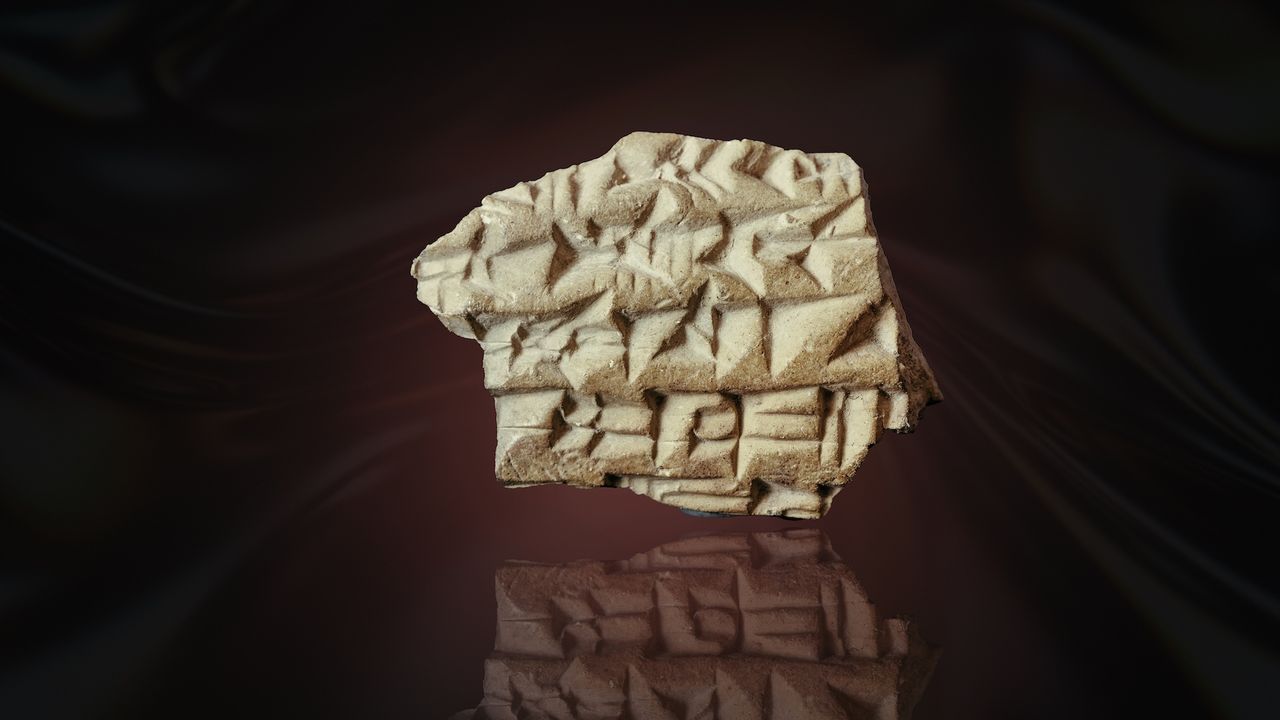A 2,700-year-old pottery sherd discovered near the Temple Mount in Jerusalem marks a groundbreaking archaeological find: it is the first known correspondence between the Assyrian Kingdom and the Kingdom of Judah ever found in the city.
The small sherd, measuring just 1 inch long (2.5 centimeters), is covered with cuneiform text and dates back to the First Temple period (1000 to 586 B.C.). Archaeologists believe it contains a royal message from the Assyrian Kingdom demanding information about a late tribute payment from Judah.
The inscription is written in Akkadian, a language once widely spoken in the Near East, including Assyria, and recorded using cuneiform script. “The inscription provides direct evidence of official correspondence between the Assyrian Empire and the Kingdom of Judah,” said Ayala Zilberstein, the excavation director on behalf of the Israel Antiquities Authority (IAA). “This discovery strengthens our understanding of the depth of the Assyrian presence in Jerusalem, as well as its influence over the affairs of the Judean kingdom.”
### Discovery Near the Temple Mount
The sherd was found during excavation work near the Western Wall of the Temple Mount. Researchers uncovered it while “wet sifting” debris at Emek Tzurim National Park. Moriah Cohen, an employee at the “Archaeological Experience” at Emek Tzurim—a visitor attraction that allows people to help sift for artifacts—recalled the moment of discovery:
“I was sifting through the dirt and suddenly noticed a sherd with a strange decoration. After confirming it was not decoration but genuine cuneiform, I screamed out of excitement.”
Though the sherd was found in soil dating to the Second Temple period (516 B.C. to A.D. 70), its presence there suggests that the area served as a hub for high-ranking officials during the earlier First Temple period, according to Zilberstein.
### A Royal Sealing from Assyria?
Experts believe the sherd may be part of an inscribed royal sealing—an impression used to seal official letters—from the Assyrian court. Assyriologists Peter Zilberg of Bar-Ilan University and Filip Vukosavović of the IAA explained:
“Bullae or sealings like this typically bore impressions accompanied by short inscriptions in Assyrian cuneiform, which noted the contents of the dispatch or its destination.”
This supports the idea that the message was a royal communication concerning a delayed tribute payment. The text references a deadline on the first of Av—a summer month in both the Jewish and Mesopotamian calendars—and mentions a chariot officer, a role well documented in Assyrian records, who likely delivered the royal message.
### Connecting to Known Kings of Judah
The message does not name the king of Judah it was addressed to, but it was likely intended for the court of King Hezekiah, Manasseh, or Josiah. Notably, Josiah ruled while Judah was a vassal kingdom under Assyrian power.
The reason for the payment delay remains unclear. “While we cannot determine whether this demand arose from a mere technical delay or was a deliberate political move, the existence of such an official appeal suggests a point of friction between Judah and the imperial government,” said Zilberg and Vukosavović.
### Origin and Significance
Material analysis indicates the sherd was not made locally in Jerusalem. Anat Cohen-Weinberger, a petrographic researcher at the IAA, noted that its mineral composition aligns with locations within the Assyrian Kingdom, such as Nineveh.
“A chemical analysis of the bulla’s composition is currently underway to more precisely pinpoint its origin,” Cohen-Weinberger added.
Though small, the sherd is a highly significant find. Zilberg and Vukosavović emphasized:
“This discovery opens a window into the political and administrative ties between Judah and Assyria. It represents the very first evidence of official—and perhaps even tense—communication between Jerusalem and the world’s most powerful empire during this historical period.”
—
This unprecedented find sheds new light on the complex relationships and diplomacy that shaped the ancient Near East and Jerusalem’s place within it.
https://www.livescience.com/archaeology/i-screamed-out-of-excitement-2-700-year-old-cuneiform-text-found-near-temple-mount-and-it-reveals-the-kingdom-of-judah-had-a-late-payment-to-the-assyrians
